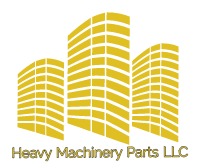Heavy machinery represents a significant investment, and ensuring its longevity and operational readiness is paramount. When these powerful assets sit idle for extended periods – six months or more – various components can degrade, leading to potential damage and costly repairs upon reactivation. Before you even think about turning the ignition, performing a thorough pre-start check based on preventative maintenance principles is crucial. This article outlines six key steps to take before firing up heavy machinery that has been inactive, explaining why each step is essential and what potential problems you can prevent.
Don’t forget, we also offer a wide range of spare parts for heavy machinery, so feel free to inquire about any replacement needs you may have. Just click on contact us.
6 Critical Preventative Maintenance Steps for Idle Heavy Machinery
Reactivating heavy machinery after a prolonged period of inactivity requires a systematic approach. Neglecting these crucial steps can lead to significant mechanical issues, safety hazards, and unnecessary downtime. Here are six key preventative maintenance checks you must perform:
Remember that you can download our maintenance guides for free by clicking here!
1. Inspect Fluid Levels and Condition (Engine Oil, Coolant, Hydraulic Fluid, Fuel):
- Why? Over time, fluids can degrade, become contaminated with moisture or debris, and lose their lubricating or cooling properties. Low fluid levels can also indicate leaks that need addressing. Inactive engines can experience oil drain-back, leaving critical parts unprotected upon initial start. Coolant can become acidic and corrode internal engine components. Hydraulic fluid can absorb moisture, leading to cavitation and reduced system efficiency. Fuel can degrade, oxidize, and even grow microbial contamination, clogging filters and injectors.
- What is Prevented? Premature engine wear and seizure, overheating, hydraulic system failures, fuel system blockages, corrosion of internal components, and inefficient operation.
2. Check Battery Condition and Connections:
- Why? Batteries naturally discharge over time, especially when not connected to a charging system. Corrosion can build up on terminals, hindering electrical flow. A weak or dead battery will prevent the machinery from starting. Faulty connections can lead to electrical shorts or unreliable power supply.
- What is Prevented? Starting failures, damage to the electrical system, corrosion of battery terminals and cables, and potential safety hazards due to electrical issues.
3. Examine Belts and Hoses for Cracks, Wear, and Leaks:
- Why? Rubber components like belts and hoses can dry out, crack, and deteriorate when not in use. Temperature fluctuations and exposure to the elements accelerate this process. Worn or cracked belts can slip or break, leading to the failure of critical systems like cooling or power transmission. Leaky hoses can result in loss of essential fluids, causing overheating or hydraulic system malfunctions.
- What is Prevented? Engine overheating, power steering failure, air conditioning failure, hydraulic system leaks and failures, and unexpected downtime due to component breakage.
4. Inspect Tires or Tracks for Damage and Proper Inflation/Tension:
- Why? Tires can lose air pressure over time, leading to uneven wear, reduced fuel efficiency, and potential damage to the tire structure. Sidewall cracking can also occur due to prolonged static load and UV exposure. Tracks on tracked machinery can lose tension, leading to slippage, accelerated wear, and potential derailment.
- What is Prevented? Uneven tire wear, premature tire failure, reduced traction and stability, damage to rims, track slippage and derailment, and increased wear on undercarriage components.
5. Lubricate Moving Parts and Check for Corrosion:
- Why? Lubricants can dry out or lose their effectiveness over time, leaving moving parts susceptible to friction and wear upon startup. Exposure to moisture and the elements can lead to rust and corrosion on critical components like joints, linkages, and cylinders.
- What is Prevented? Excessive wear and tear on moving parts, seizing of components, reduced operational efficiency, increased friction and heat generation, and structural damage due to corrosion.
6. Conduct a Visual Inspection for Pests, Debris, and Leaks:
- Why? Animals and insects can build nests in machinery, potentially damaging wiring, hoses, and filters. Dust, dirt, and debris can accumulate, hindering cooling and causing blockages. New leaks might have developed during the period of inactivity and need to be identified before starting the engine.
- What is Prevented? Electrical shorts and malfunctions, blocked airflow and overheating, damage to filters and other components, and environmental contamination from leaks.
By diligently performing these six preventative maintenance steps before attempting to start heavy machinery that has been idle for six months or longer, you significantly increase the chances of a smooth and safe reactivation, minimize the risk of costly repairs, and prolong the overall lifespan of your valuable equipment. Taking the time for these crucial checks is a small investment that yields significant returns in the long run.
